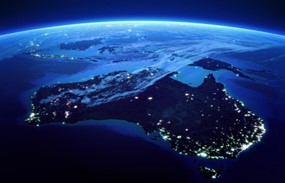IVF success rates in Australia and New Zealand have continued to improve, while the number of IVF twins are falling, a new UNSW report has shown.
IVF success rates in Australia and New Zealand have continued to improve, while the number of IVF twins are falling, a new UNSW report has shown.
The report shows the overall live birth rate per embryo transfer has increased from 23.6% in 2013 to 26.8% in 2017, the most recent year from which data are available. A total of 15,613 babies were born through IVF in Australia and New Zealand in 2017/18.
The improved success rates are likely due to the increasing trend in frozen embryo transfers and improved laboratory technologies. For the second year in a row, the birth rate following frozen embryo transfer cycles (28.9%) was higher than fresh embryo transfer cycles (24.1%). The use of pre-implantation genetic testing increased by 24% between 2016 and 2017.
“The improvement in the overall live birth rate has largely been due to improved success rates in cycles using frozen embryos,” said UNSW Medicine Professor Michael Chapman, President of the Fertility Society of Australia (FSA).
In parallel, the proportion of twins and triplets born following IVF treatment is now 3.6% – a record low in Australia and New Zealand’s 40-year IVF history. This all-time low is due to the increased proportion of IVF cycles where only a single embryo is transferred, up from 76% in 2013 to 89% in 2017.
“The Australian and New Zealand region has one of the lowest rates of multiple deliveries from IVF treatment in the world and maintains consistently high success rates. We have achieved this through the commitment of IVF specialists and patients to provide the safest treatment possible, guided by clinical practice guidelines developed by the FSA,” said Professor Luk Rombauts, Vice President of the FSA.
The report, which is funded by the Fertility Society of Australia (FSA), contains data about IVF cycles undertaken in 2017 and the resulting babies born in 2017 and 2018.The data presented in this report is maintained by the ³Ô¹ÏÍøÕ¾ Perinatal Epidemiology and Statistics Unit (NPESU) within UNSW’s and on behalf of the FSA.
Key findings of the report
- Largest ever number of babies born through IVF – 13,944 from Australian clinics and 1,669 from New Zealand clinics in 2017
- Live birth rate per embryo transfer has increased from 23.6% in 2013 to 26.8% in 2017
- Record low multiple birth rate of 3.6%








